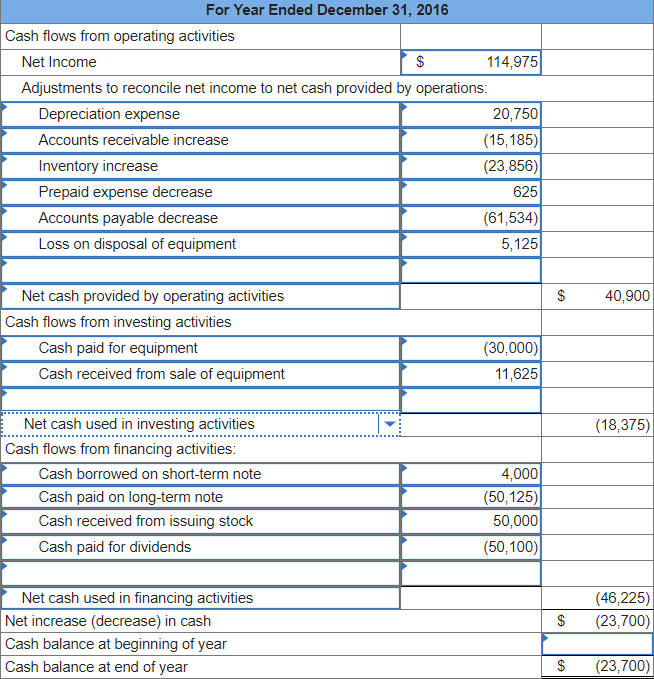
Supplies and inventory have to be properly accounted for because the company usually pays sales tax for supplies while inventory is taxed when they are sold to the customer. When a customer or business makes a purchase on credit, a general ledger account known as accounts payable is created or the current one is increased. Accounts payable refers to the short-term debt that a company owes another entity during conducting business operations. Purchase Account is a ledger account that accumulates transactions concerned with purchases of merchandise be it cash or credit. In other words, all the transactions related to the purchase of goods are recorded in the ledger by opening a purchase account.
- In this way, the owner can get all the relevant information as to the purchase of goods, in one place.
- Inventory comprises items that companies produce or purchase to sell to customers.
- They must also ensure that the amount listed in the control account is the total of each of the amounts owed by a business to each supplier.
- Offering customers in-house accounts for making B2B purchases offers strong incentives for companies to do business with any given eCommerce platform, and software customizations and automations update this classic practice for the digital age of instant communications.
- Continuing the example above, when the clothing retail company pays up its debt to the haute couture manufacturer, the following journal entry will be made to record the transaction.
Many B2B companies fear offering accounts when business customers have many payment options, and others worry that they’re subsidizing their customers with interest-free loans for 30 days. While these fears are valid to some extent, there are many ways to mitigate the risks to acceptable levels, and in-house purchasing accounts generate real competitive advantages. Today’s eCommerce platforms function as business partners for their customers, and helping them succeed increases a B2B company’s sales and success. Purchase Returns, or Returns Outwards, is a contra expense account with a credit balance used by a buyer to record the value of previously purchased goods returned to a seller due to being damaged, defective, or otherwise undesirable. Purchase of merchandise refers to the process of acquiring goods from suppliers.
Payment Hub
For instance, if a clothing retail company buys clothes worth $220,590 from an haute couture manufacturer and they are expected to pay within 90 days. Offering these accounts generates major benefits in four key areas that include customer convenience, sales convenience, ordering convenience and greater customer loyalty to the business brand. Purchases whether paid in cash or taken on credit to be settled later both led to a reduction in the company’s assets and an increase in its expenses. Accounting for the purchase of both supplies and inventory requires that a debit be made to either the supplies expense or inventory account depending on whether what has been purchased is considered supplies or inventory. For purchases on credit, a debit is made to the supplies or inventory account and a credit is made for the accounts payable.
- Offering credit to online customers has its drawbacks and risks, but back-office customizations can improve the odds of curating successful and profitable long-term account relationships by offering in-house buying accounts.
- When the payment of goods purchased from the seller, is made immediately by the buyer, using cash, card, cheque or via any online mode, it is called cash purchases.
- The number of line entries on a purchase log depends on the type of product and the amount of product that has been received.
- In this case, the company does not pay for the supplies or inventory they purchased immediately.
- When the payment of goods purchased from the seller is made at a future date by the seller, i.e. the seller allows a credit period to the buyer for making the payment is called Credit Purchases.
These goods will become a part of the inventory for Green Co. until they get processed or sold to a customer. In a nutshell, we can say that Ledgers are simply the registers where we keep T-accounts or T-accounts are kept in ledgers. To begin with, we need to clear one misconception that LEDGER is NOT T-Account.
Inventory Account Under the Perpetual Inventory System
For retail companies, their purchases involve buying finished goods from manufacturers which they later resale. Accounting is highly important in business because it allows a company to effectively track purchases and payments made to other vendors, provided that tracking is completed correctly. There are a number of commonly used digital systems for tracking purchases and spending, but in some instances a manual log of accounts may be more appropriate for a company to use. Purchase journals are just one way for a company to manually track their finances. It is very important, for accuracy of accounting, to keep accurate records of all accounts payable and accounts receivable, and to match payments on account with their relevant invoices as soon as can be done so.
The cost of the ending inventory is computed through a physical count (or an estimate) and is subtracted from the cost of goods available to arrive at the cost of goods sold. Thus, the Sales Returns a/c balance instead of being shown on the debit side would be deducted from Sales a/c on the credit side of the Trading a/c, thereby giving us the figure of Net Sales in the Trading account itself. Being a nominal account, this account is closed at the end of the accounting period. Emilie is a Certified Accountant and Banker with Master’s in Business and 15 years of experience in finance and accounting from large corporates and banks, as well as fast-growing start-ups. Let me walk through the posting setup relevant to purchasing in relation to handling of items etc. The GSA SmartPay Account also benefits merchants because they are paid quickly for the supplies and services they provide.
Purchase of Merchandise: What It Is, Accounting, Journal Entry, Example, Definition, Cash or Account
Purchases could also be a barter transaction where the parties involved exchange a good for a service or vice-versa. Purchases are a big part of the manufacturing process as raw materials that are processed into finished goods must be purchased. Hence for manufacturing companies, their purchases involve buying raw materials that will be used in the production of goods.

However, in all of the above cases, purchases are reduced by crediting the purchases account, which is because no sales are happening. Gartner predicts that personalization on B2B eCommerce sites will enable companies to outsell their competitors by 30 percent by 2018, and offering customers purchasing accounts delivers the kind of personal service and easier ordering that ensure marketing success. House accounts can be customized for each authorized buyer, store location and line of products. B2B companies can design more complex interfaces and user experiences based on greater financial and personalization information that’s available for companies that apply for purchasing accounts.
Get Your Questions Answered and Book a Free Call if Necessary
Although the office supplies were paid for by bank transfer, the journal entry records the payment as cash because the transfer was made immediately after the purchase was made and represents a reduction in the company’s cash in the bank. Inventory comprises items that companies produce or purchase to sell to customers. These include the raw materials and components, repair and operating supplies, finished goods and maintenance, and work in progress.
As such, transactions for purchases made on credit are recorded in the company’s payable ledger. The accounts payable records all that the company owes or has to pay to creditors. During the normal course of business, many companies will purchase items on credit. When items are purchased on credit or on account, the transaction is recorded in the accounting records in the purchases journal. A purchases journal is a specialized type of accounting log that keeps track of orders made by a business on credit or on account.
Purchase ledger control accounts in accounting
In this way, the owner can get all the relevant information as to the purchase of goods, in one place. In a business, purchases are made by the firm to keep a stock of goods for the purpose of reselling it to customers calculate lease payments and also for producing other products. When the purchases are made, they are recorded in the purchase day book first which indicates the name of the supplier and other details as to the product bought.
Can I purchase online directly from a savings account? You can, but … — Fortune
Can I purchase online directly from a savings account? You can, but ….
Posted: Fri, 11 Aug 2023 07:00:00 GMT [source]
While entering the transactions in the purchase book, one must ensure that the credit purchases are of the items in which the firm is dealing. Purchasing on account is a powerful inducement to encourage sales and customer loyalty, and the process works similarly to offering store credit at the retail level. However, the process actually works more like American Express cards where card holders repay their full balances at the end of each billing cycle. B2B companies that offer their customers credit terms do so for many reasons, and the terms usually specify NET payments within 30 days.










